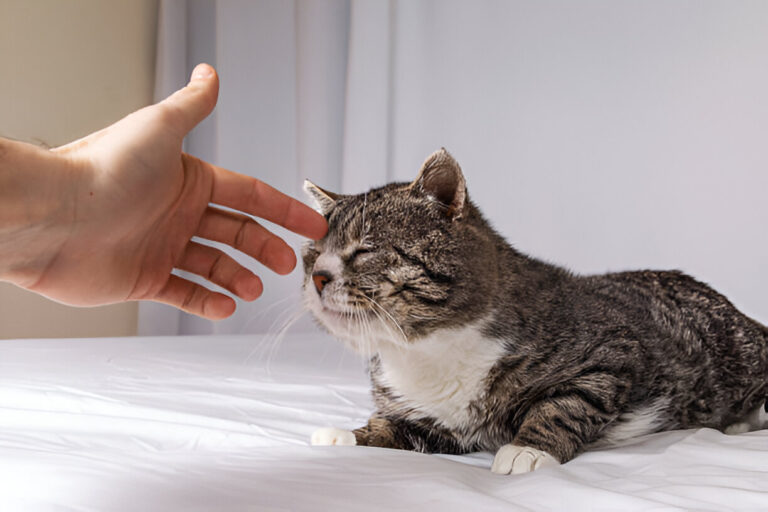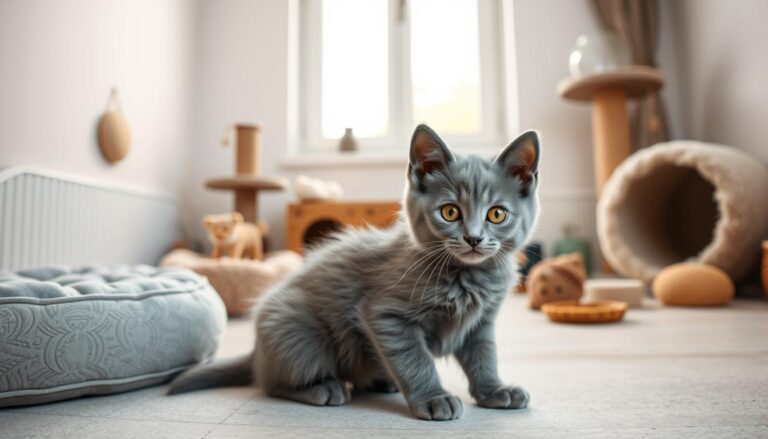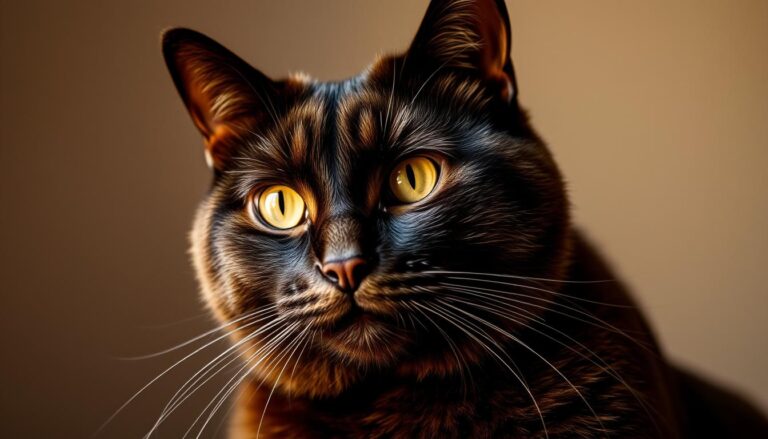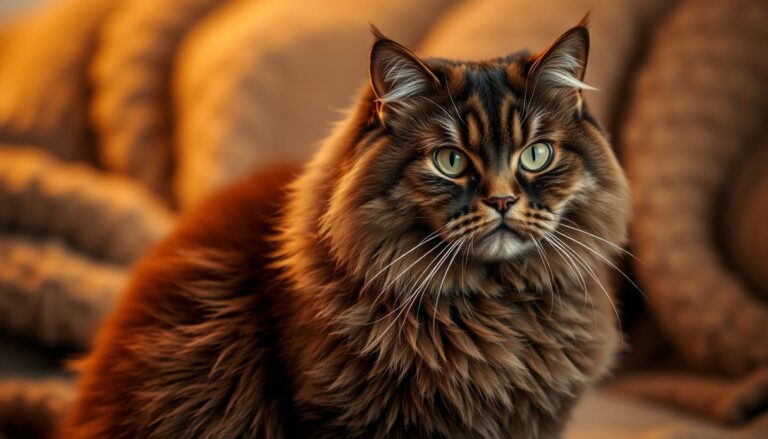Comprehensive Guide to Different Breeds of Cats
Table of Contents
Breeds of Cats
Imagine a room filled with cats, each with its own unique personality and charm. The world of domestic cat breeds is full of diversity. Over 100 breeds are waiting to win your heart. Whether you love cats or are getting your first one, learning about breeds can change your experience.
This guide takes you into the world of domestic cat breeds. You’ll learn about their histories, looks, and personalities. From the sleek Siamese to the fluffy Maine Coon, each breed has its own story. Exploring these breeds will show you how special our feline friends are.
Key Takeaways
- More than 100 unique cat breeds exist worldwide
- Breeds range from natural to carefully developed types
- Each cat breed has distinct physical and personality traits
- Understanding breed characteristics helps in selecting the perfect pet
- Domestic cat breeds offer incredible diversity for potential owners
Understanding Cat Breed Classifications
The world of cat breeds is incredibly diverse, with over 70 recognized by major cat associations. It’s not just about categorizing them. It’s about learning about their origins, unique traits, and history.
Cats have changed a lot from their wild ancestors to being our pets. They kept much of their independent spirit even as they became part of our homes.
Natural vs. Man-made Breeds
Popular cat breeds fall into two main groups:
- Natural Breeds: They came from natural genetic changes
- Man-made Breeds: Created through careful breeding for certain traits
Natural breeds, like the Norwegian Forest Cat, developed in specific places. They adapted to their environments. Man-made breeds, such as the Exotic Shorthair, were bred for certain looks or personalities.
Breed Recognition Organizations
Important groups help document and standardize cat breeds:
- Cat Fanciers’ Association (CFA)
- The International Cat Association (TICA)
- American Cat Fanciers Association (ACFA)
Historical Development of Cat Breeds
The history of cat breeds shows how humans and cats have influenced each other. From ancient Egyptian cats to today’s designer breeds, cats have always been special. They’ve kept their unique personalities while becoming our friends.
Knowing about these breed classifications helps us see the amazing variety of cats. It makes it easier to find a cat that fits our lives perfectly.
Physical Characteristics of Popular Cat Breeds
Exploring popular cat breeds reveals a wide range of physical traits. Each cat is unique, with differences in size, coat texture, and body shape. These traits go beyond just color.
Knowing about the physical traits of different cat breeds helps us see their beauty. Key features include:
- Coat length and texture
- Eye color and shape
- Body size and build
- Ear and tail configurations
Size differences among cat breeds are quite striking. For example, Maine Coon cats can weigh up to 25 pounds. On the other hand, Scottish Fold cats usually weigh between 5-13 pounds. The Savannah breed can grow up to 17 inches tall, while Munchkin cats are much smaller, at 5-7 inches.
Coat types are another interesting aspect of cat breeds. Some cats, like the Sphynx, have no hair. Others, like Persian and Norwegian Forest cats, have long, luxurious coats. The Devon Rex has a unique wavy coat, which is great for people with allergies.
| Breed | Weight Range | Coat Type |
|---|---|---|
| Bengal | 8-18 lbs | Short, spotted |
| Persian | 7-14 lbs | Long, fluffy |
| Siamese | 7-13 lbs | Short, sleek |
Color patterns add to the fascination of cat breeds. Some cats have unique markings, like the Abyssinian’s ticked tabby “M” marking. Others have classic patterns, like the black and white tuxedo. Each breed has its own special look.
Most Common Breeds of Cats in America
Exploring the world of cats, you’ll find many breeds loved by Americans. Knowing the most popular breeds helps you pick the right cat for your home.
The United States is home to many interesting cat breeds. Each has its own look and personality. The Domestic Shorthair is the most common, making up a big part of the country’s cats.
Domestic Shorthair Breeds
Domestic Shorthairs are the classic American cat. They are great pets because they are:
- Friendly and easy to get along with
- Simple to care for
- Genetically diverse
- Usually healthy
Purebred Popular Choices
Some purebred cats are very popular. Here are the top ones:
| Breed | Unique Characteristics | Popularity Ranking |
|---|---|---|
| Ragdoll | Large, fluffy, blue-eyed companions | 1st Place |
| Maine Coon | Gentle giants with robust build | 2nd Place |
| Persian | Luxurious long fur, flat-faced appearance | 3rd Place |
Exotic Breed Options
If you want something different, exotic breeds are available. They have unique features:
- Sphynx: Hairless and very social
- Bengal: Looks wild with lots of energy
- Scottish Fold: Has folded ears
- Siberian: Good for people with allergies
Whether you like a classic Domestic Shorthair or something exotic, there’s a cat out there for you.
Coat Types and Maintenance Requirements
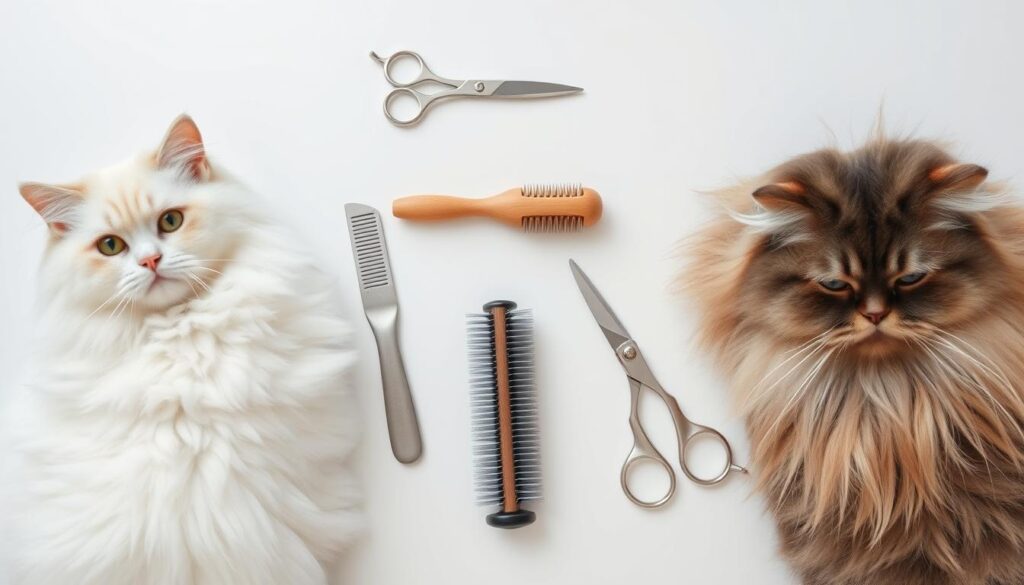
Knowing about cat coat types is key for cat owners. Domestic cat breeds have a wide range of fur types. They go from sleek short coats to long, luxurious fur.
Cat coats fall into four main types:
- Hairless: Breeds like Sphynx with no fur
- Shorthair: Cats with short, dense fur all over
- Medium hair: Longer fur on the mane, tail, and back
- Longhair: Long, fluffy fur all over the body
Grooming needs differ a lot between these coat types. Short-haired cats need weekly brushing. Long-haired cats need daily grooming to avoid mats. For example, Maine Coon and Persian cats need more grooming than American Shorthairs.
Some grooming tips include:
- Nail trimming every 2-4 weeks
- Teeth brushing 2-3 times a week
- Professional grooming for complex coats
Choosing the right cat breed means considering grooming time. Hairless breeds like Sphynx need regular baths. Curly-coated breeds, like LaPerm, need special grooming to keep their fur looking good.
Personality Traits Across Different Cat Breeds
When choosing the friendliest cat breeds, knowing their personalities is key. Each breed has its own special traits that make them great companions. Whether you’re looking for the best house cat breeds or want to learn about feline temperaments, understanding their personalities is crucial.
Cat personalities vary a lot, from very social to very independent. A study of 5,726 cats from 19 breeds gives us interesting insights into their behavior and temperament.
Social and Friendly Breeds
Some cat breeds are known for being very social and loving. The most sociable breeds include:
- Burmese: Extremely outgoing and quick to form attachments
- Abyssinian: Active, affectionate, and intelligent
- Ragdoll: Curious and eager to be involved with family
- Siamese: Vocal and deeply attached to their humans
Independent Cat Breeds
Not all cats want to be around people all the time. Some breeds like their space and are very self-sufficient:
- British Shorthair: Quiet and enjoy relaxed companionship
- Russian Blue: More reserved and less likely to seek constant contact
- Norwegian Forest Cat: Enjoys independent activities like hunting and climbing
Family-Oriented Breeds
For families looking for interactive and gentle pets, some breeds are perfect:
- Maine Coon: Gentle and enjoy mental stimulation through play
- Ragamuffin: Docile and people-oriented
- LaPerm: Affectionate and enjoy active family interactions
Knowing these personality traits helps you pick the right cat for your home and lifestyle.
Size and Weight Variations in Cat Breeds
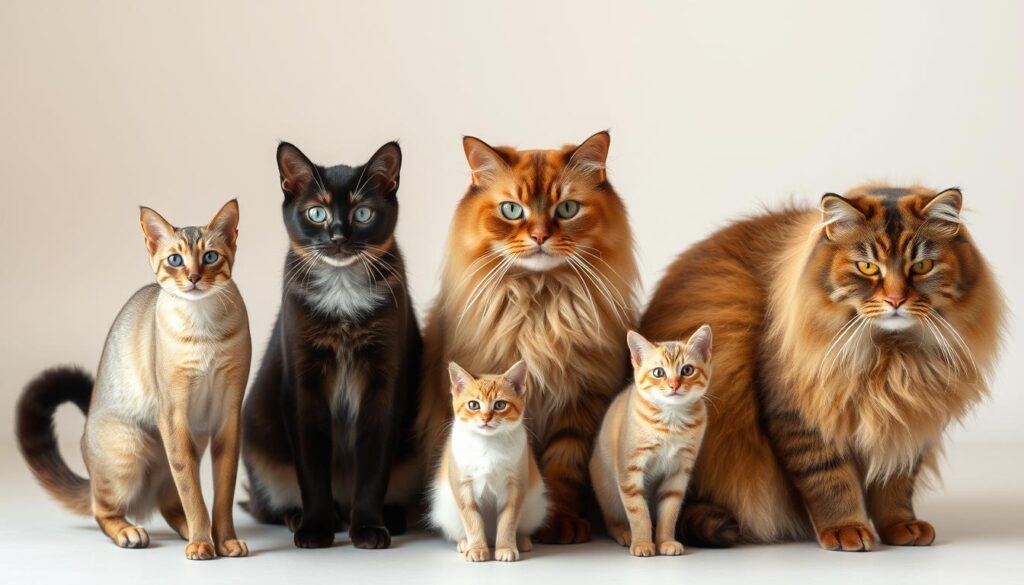
Size is key when looking at cat breeds. They come in all shapes and sizes, from tiny to big. This diversity makes each breed special.
The average cat weighs about 10 pounds and is 9 to 10 inches tall. But, breed variations can be huge. Some cats are as light as 5 pounds, while others can be up to 25 pounds.
- Small Breeds (5-8 pounds):
- Singapura
- American Curl
- Cornish Rex
- Medium Breeds (8-12 pounds):
- Siamese
- Russian Blue
- Abyssinian
- Large Breeds (12-25 pounds):
- Maine Coon
- Ragdoll
- Norwegian Forest Cat
Think about your home and lifestyle when picking a cat breed. Big cats need more food, space, and exercise. Small cats fit better in smaller homes.
Knowing about size helps pick the right cat for your home.
Remember, each cat is different, even within a breed. Regular vet visits and keeping your cat at a healthy weight are important. This ensures your cat stays healthy, no matter its size.
Health Considerations by Breed
Knowing the health traits of different cat breeds is key for good pet care. Each breed has its own genetic traits and needs. These can greatly affect their health and how long they live.
Common Genetic Health Issues
Many cat breeds face specific health problems. It’s important for owners to know about these. For example:
- Siamese cats often have dental issues, asthma, and eye problems
- Persian cats usually get kidney disease
- Bengal cats might get heart disease
- Sphynx cats can have skin and heart issues
Breed-Specific Care Requirements
Each popular cat breed needs special health care. Regular vet visits are crucial, especially for breeds with known health risks.
- Cats aged 1-10 need yearly vet visits
- Cats over 10 should see the vet every six months
- Genetic tests can spot health risks early
Lifespan Variations
Lifespan varies among cat breeds. With the right care, many cats live 15-20 years. Here are some breed-specific lifespans:
- Russian Blue: 15-20 years
- Bombay cats: Up to 20 years
- Ragdolls: Usually 15-17 years
- Balinese: Can live 18-22 years
Understanding these health aspects helps you care for your cat better. It also helps you choose the right breed.
Choosing the Right Cat Breed for Your Lifestyle
Finding the right cat breed is all about knowing your lifestyle. About 70% of cat owners look at the breed’s temperament first. Your home, daily schedule, and what you like matter a lot in picking the perfect cat.
When looking at the best house cat breeds, think about these important points:
- Living space (apartment vs. house)
- Time available for pet interaction
- Allergies or grooming preferences
- Family dynamics and activity levels
If you live in an apartment and want a friendly cat, here are some great choices:
- Ragdoll: Known for docile, people-loving temperament
- Russian Blue: Quiet and adaptable to smaller spaces
- American Shorthair: Easy-going and low-maintenance
For families who love to be active, cats like Bengals or Abyssinians are great. They need lots of play and mental challenges. Maine Coons and American Bobtails are good with kids because they’re gentle and patient.
Matching your lifestyle with the right cat breed ensures a harmonious, long-lasting relationship.
Don’t forget about grooming needs, allergies, and how much time you can spend with your cat. With the right choice, you’ll find a cat that fits your life perfectly.
Special Features and Unique Characteristics
Exploring cat breeds reveals some amazing domestic cat breeds. They have special traits that make them stand out. These traits turn each breed into a unique and charming companion.
Some cat breeds have incredible physical features that grab your attention right away. These features include unique coat patterns and extraordinary body shapes.
Rare Coat Patterns
Cat lovers admire breeds with amazing coat designs. These designs make them truly special. Here are a few examples:
- Bengal cats with distinctive rosette patterns resembling wild leopards
- Ocicat breeds with striking spotted coats
- Rare color combinations like smoke, silver, and chocolate
Distinctive Physical Traits
Some cat breeds have physical traits that make them instantly recognizable:
- Scottish Fold cats with uniquely folded ears
- Manx cats completely lacking tails
- Sphynx breeds with hairless bodies
- Polydactyl cats featuring extra toes
Unusual Behavioral Characteristics
Some cat breeds also have interesting behaviors:
- Siamese cats known for their extensive “conversations”
- Maine Coon breeds that enjoy water interaction
- Turkish Van cats with unusual swimming abilities
These special features add to the diversity of cat breeds. They ensure that every cat brings something unique to your home.
Popular Cat Breeds Around the World
Cat breeds vary a lot around the world. They show off the unique tastes and traditions of different places. Exploring these breeds, you’ll see how diverse and amazing cats are.
In the United States, some cat breeds are especially loved. Here’s a list of some well-known ones:
- Maine Coon – A large, friendly breed popular in North America
- Siamese – Highly vocal and social, originating from Thailand
- Persian – Recognized for their luxurious long coats
- Bengal – Known for wild-looking spotted patterns
- Scottish Fold – Distinctive for their unique ear structure
International registries list different numbers of cat breeds. For example:
| Registry | Recognized Breeds |
|---|---|
| The International Cat Association (TICA) | 73 breeds |
| Cat Fanciers’ Association (CFA) | 45 breeds |
| World Cat Federation (WCF) | 69 breeds |
What people like in cats varies by region. Asian countries often favor breeds with unique characteristics. Meanwhile, Europeans tend to like more traditional breeds.
Learning about cat breeds worldwide helps us see the beauty of feline friendship. It shows how cats bring joy and companionship to cultures everywhere.
Conclusion
Exploring cat breeds shows us a world of unique personalities and traits. From the laid-back Persian to the lively Bengal, there’s a cat for every owner. Each breed adds its own charm to your home.
Learning about different cat breeds is helpful, but the most important thing is the bond you’ll form. Whether it’s a playful Siamese, a loving Burmese, or a gentle Ragdoll, remember each cat is special. The best pet is one that fits your life and wins your heart.
Knowing about breed traits helps you choose, but love goes beyond these. Domestic cat breeds offer endless companionship, personality, and joy. Your ideal cat is out there, ready to join your family and bring warmth and laughter.
Starting your cat journey means embracing their diversity and magic. Each breed has its own story, and your cat will write a special chapter in your life.


